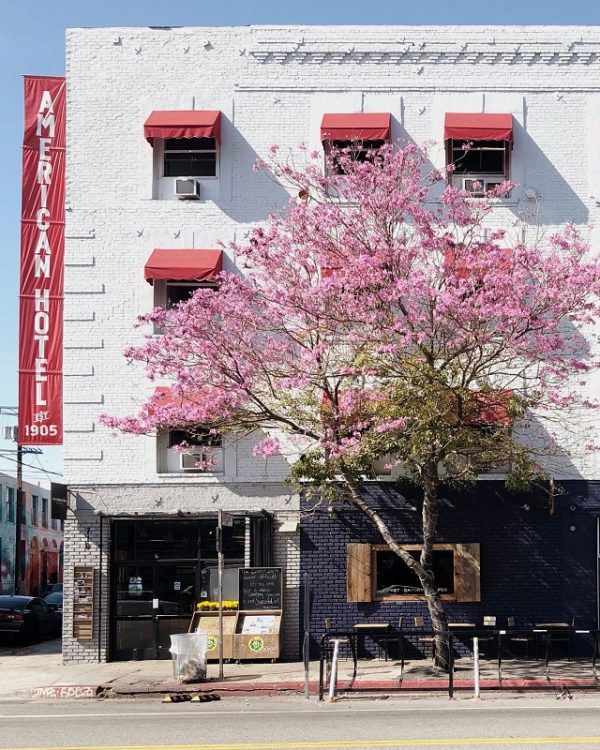I have eaten
the plums
that were in
the icebox
and which
you were probably
saving
for breakfast
Forgive me
they were delicious
so sweet
and so cold
— William Carlos Williams, “This Is Just To Say”
Some poets are seers. With this short poem, which is perhaps his most famous piece, William Carlos Williams saw something that was to come. But what? He didn’t just predict his roommate was going to be mad that he ate their plums.
Williams was a 20th century practitioner of “Imagist” poetry. Some people try to read meaning into Williams’ images. A poet friend of mine who hosts a weekly poetry show on the local community radio station said that the chickens in Williams’ other oft-quoted piece represent something. For the life of me I can’t remember what they’re supposed to represent. All I can remember is the image:
so much depends
upon
a red wheel
barrow
glazed with rain
water
beside the white
chickens.
— “The Red Wheelbarrow”
Chickens. Plums. These are things, and the poems are verbal snapshots of them. I would argue that Williams’ poetry of the everyday foresaw an aesthetic we value now, an aesthetic that cuts through and hums underneath all the cultural noise of the moment. You could call it a culture of mindfulness; or, it’s a culture of appearances — it depends on how you read Williams’ poems.
Appearances
Williams asserts that “so much depends” upon the red wheelbarrow and the chickens, yet all we have is the appearance of these things in the rain. Likewise, we have Instagram, a platform that depends entirely upon appearances. You could look beneath the images and analyze what they mean to the people who post them, but many people post images on Instagram primarily for the aesthetic appeal of the things themselves.
To look at some of the photos from Instagram’s best photographers is to see an uncanny likeness to the aesthetics and symmetry in Williams’ The Red Wheelbarrow.

Here, the simplicity of the everyday image speaks for itself. Nature and human constructs exist in a complimentary color scheme, much like Williams’ white chickens and red wheelbarrow.

It’s not hard to imagine the speaker in This Is Just To Say living in a place like this. Much like the poem, there’s a sensual, pleasant alignment here. All things are placed in such a way as to accent their sensual qualities.
Much like Williams, Instagram culture values the appearance and placement of things. Each moment and image is a snapshot, existing independent of, yet together with, all the snapshots that came before it. While The Guardian’s Oliver Wainwright bemoans the way architecture has fallen under Instagram’s spell, I would argue it’s the other way around. In a world where so much seems transient, architects and other visual creators want to create singular images that are also colloquial touchpoints. Instagrammers have taken to documenting what became a dominant aesthetic because of movements like Imagism.
According to the Poetry Foundation, Imagism “relied on the resonance of concrete images drawn in precise, colloquial language.” But why do the images resonate? It’s a democratic ideal. All things matter and are worthy of documentation. The stuff of poetry is not high-brow, it’s the same stuff we interact with all the time.
We yearn for colloquial, democratic simplicity and beauty, and it’s not just architecture and Instagram photos. It’s in neighborhoods where the existence of a community garden raises sale prices for homes located within 1,000 feet of the garden. The appearance of lush green space in an urban environment improves “curb appeal.” Curb appeal is the aesthetic appeal, the agreeable appearance of a home. Unfortunately, this may price some people out of their rental houses. You can’t forget that the culture of appearances comes with a price tag.
Mindfulness
So far, this has been a shallow reading of Williams’ poetry. He didn’t write merely about the appearance of objects — he immersed himself in the entire spectrum of what it is to perceive the world through the senses. This corresponds directly with our culture’s current obsession with mindfulness. As things continue to move at an alarming rate, you often hear how important it is to slow down and be mindful.
You can find mindfulness reminders almost anywhere you look. The idea of a walking tour is one: “If you truly want to immerse yourself in a new place, you need to spend time simply being there.” That’s according to the website Trip.com. To see a place, you shouldn’t just jet from site to site, you should spend time just “being there.” To simply be there is to be mindful.
Williams practices mindfulness throughout his oeuvre.
The ship moves
but its smoke
moves with the wind
faster than the ship
—thick coils of it
through leafy trees
pressing
upon the river
— from “4th of July”
Here you have the physical aspect of what’s happening, the movement, and no judgment of what these things mean. Likewise, with the plums in the icebox, the sensual nature of the plums — sweet and cold — impresses itself upon the speaker. The speaker experienced the plums; the speaker ate them; the speaker lost their self in the moment of enjoying the plums in the icebox.
While the New York Times bemoans the muddied meaning of mindfulness, Time hails the mindful revolution. As with appearances and Instagram culture, the mindfulness bit can seem shallow, but it also can strike you as fairly revolutionary. Like Williams’ poems, it’s a matter of your interpretation. If someone is telling you to be mindful, it can come off as dismissive and wrongheaded. Being mindful rings true while telling someone to be mindful does not.
And in the world of Instagram, many photos of “everyday” things are too perfect. Look to Williams’ poems. The messiness of life is there alongside the beauty and it’s all the same thing.
